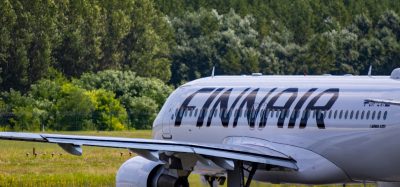Research rapidly progresses as airlines eagerly await alternative fuels
Posted: 22 February 2010 | James Hileman and William Litant, PARTNER | No comments yet
In a keynote address at the September 30, 2009 meeting of the Commercial Aviation Alternative Fuel Initiative (CAAFI) in Washington, DC, Air Transport Association Chairman and UAL Corp. CEO Glen Tilton emphasised, “… there clearly is a market (for aviation alternative fuels). There are buyers. There is certainly interest.”
In a keynote address at the September 30, 2009 meeting of the Commercial Aviation Alternative Fuel Initiative (CAAFI) in Washington, DC, Air Transport Association Chairman and UAL Corp. CEO Glen Tilton emphasised, “… there clearly is a market (for aviation alternative fuels). There are buyers. There is certainly interest.”
Many feel that alternative jet fuels are a vital element in energy supply diversification in the face of rising oil prices and volatile world situations. Another important benefit of alternative fuels is that they have the potential to reduce aviation-related combustion emissions’ environmental impacts.
Progress towards alternative fuel use is moving faster as every month goes by. On November 18, 2009, Embraer, General Electric, and Amyris announced they would cooperate in a technical and environmental evaluation of Amyris’ alternative aviation fuel. This feedstock-to-fuel pathway would use an advanced fermentation technique to convert sugars to jet fuel. On December 4, U.S. Secretary of Energy Steven Chu and Secretary of Agriculture Tom Vilsack announced a $600 million investment in 19 advanced biorefinery projects around the United States, some of which will produce jet fuel. And, that same month, 15 airlines signed memoranda of understanding to begin purchases of alternative fuels.
For several years the Partnership for AiR Transportation Noise and Emission Reduction (PARTNER, http://www.partner.aero), a consortium of nine universities studying a wide range of aviation environmental impacts, has researched aspects of alternative jet fuels. PARTNER’s first alternative fuels research, known as PARTNER Project 17, was funded by the U.S. Federal Aviation Administration and conducted in the Massachusetts Institute of Technology Aeronautics and Astronautics Department and by the RAND Corp. It examined the feasibility of near-term fuel options that could be used within the existing fleet of aircraft. Alternative fuel options were compared to the current standard Jet A, derived from conventional petroleum. Options examined include an ultra low sulphur jet fuel from conventional petroleum, conventional jet fuel derived from both oil sands and oil shale, synthetic paraffinic kerosene (SPK), biodiesel, biokerosene, and alcohols. SPK fuel options include those derived from Fischer-Tropsch synthesis of natural gas, coal, and biomass, as well as hydroprocessed renewable jet fuels from palm and soybeans.
Project 17 examined whether there are alternative fuels for commercial aviation that could reduce the environmental impact of aviation while reducing price and price volatility of jet fuel. The examination used a consistent set of metrics that focused on feasibility, production potential, and environmental impact. Considerable efforts were devoted to examining the effect of fuel composition on aircraft operability and on estimating the life cycle greenhouse gas emissions that result from both fuel production and fuel use. An examination of such “well-to-wake” emissions is critical to knowing the full impact of fuel production on global climate change.
The study culminated in the technical report “Near-Term Feasibility of Alternative Jet Fuels,” issued jointly with researchers from the RAND Corp. and available for downloading at http://web.mit.edu/aeroastro/partner/reports/caepimpactreport.pdf. It found that “the economic benefits of producing alternative liquid fuels extend to all petroleum users. In particular, producing alternative liquid fuels yields benefits to commercial aviation, whether or not those fuels are used in aviation. Finally, moving to an ultralow-sulphur specification for Jet A would reduce aviation’s impact on air quality.”
The researchers recommended:
- Measures designed to lower GHG emissions should be broad and place a price on GHG emissions, allowing economically efficient choices to be made across multiple sectors. Aviation should not be treated differently from other sectors
- Measures designed to promote alternative fuel use in aviation should consider the potentially large GHG releases associated with land-use changes required for cultivating crops for producing biomass or renewable oils
- A standard methodology should be developed for assessing life-cycle GHG inventories and impacts of producing and using aviation fuels that takes into account key inputs in producing the fuels and aviation-specific effects associated with high- altitude emissions of gases other than CO2
- To improve air quality, the adoption of a reduced sulphur standard or a ULS jet fuel should be considered, but economic and climate costs and benefits must be weighed
- Research and testing should be performed using emission measurements from alternative jet fuels to understand the influence of fuel composition on emissions, and to enable improved assessments of the deployment’s effects
- Long-term fundamental research on the creation of alternative middle-distillate fuels for use in ground transportation and aviation should be supported.
The report stated that while the near-term prospects for alternative jet fuels are limited, more opportunities may be available in the longer term. Multiple alternative jet fuels, biomass-to-liquids and coal-biomass-to-liquids via FT synthesis, and HRJ fuels from renewable oil sources, could conceivably reduce aviation’s impact on both global climate change and air quality. The production potential and cost of these fuels depends on their being certified for use in jet engines; on the development of viable, low-cost feedstocks that do not require the use of land that would otherwise be used for food production; and on competition with other potential uses in the transportation and energy sectors that may be more or less attractive from energy-efficiency, GHG, and economic perspectives. If these criteria are met, then aviation appears to be a ready market for their use.
Because the field of alternative fuels is developing more rapidly than was anticipated by the PARTNER research team, they did not actually consider all of the options that could become viable. As such, the work of Project 17 has continued within PARTNER Project 28, which is evaluating the environmental cost and benefits of a wider range of alternative jet fuels. MIT is also conducting this research, which is jointly funded by the Air Force Research Laboratory and the FAA. As part of this ongoing effort, the research team has refined its life cycle analysis of the feedstock to fuel pathways considered during Project 17 while expanding the list of pathways that have been considered to include additional biomass options for Fischer-Tropsch synthesis as well as SPK fuels created from jatropha, salicornia, and algae. Salicornia presents an interesting option, as it is a salt-water tolerant plant that grows in sand. Our planet has an abundance of sunlight, salt water and deserts; it would be ideal to be able to find plants that could use these resources to help us meet our energy needs. Algae holds tremendous potential due to its prodigious growth rate, but many technical challenges exist if conventional methods are used to collect and dry the algae prior to oil extraction. Much research and development is currently devoted to developing technologies that would cause the algae to excrete their oil without the need for drying, a potential game-changing advance. The Project 28 research team has compiled its findings into a PARTNER report that will be publicly released in spring 2010. The team will also continue to evaluate new feedstock-to-fuel pathways as they are identified within this fast moving and exciting field.
The environmental cost-benefit analysis of PARTNER Project 28 depends on emissions measurements from gas turbine engines that are burning SPK fuels. Project 20, Emissions Characteristics of Alternative Aviation Fuels, is gathering such data. This effort, led by researchers from the Missouri University of Science and Technology (formerly Missouri Rolla), has resulted in a wealth of data from multiple measurement campaigns. The summary of findings from the latest field campaign, the Alternative Aviation Fuels Experiment (AAFEX) funded by NASA, FAA, AFRL and EPA, include an extensive dataset of how SPK fuels change emissions from a CFM56 engine. These and prior tests demonstrate that SPK fuels result in a reduction in black carbon emissions from jet engines. All of the data from the AAFEX study were presented at a special event that followed the Annual AIAA Aerospace Sciences Meeting in Orlando, Florida on January 8, 2010.
As recommended in the Project 17 report, PARTNER Project 27 will produce a comprehensive environmental cost-benefit analysis of ultra low sulphur jet fuels. This research effort, led by MIT’s Aeronautics and Astronautics Dept. and the U.S. Department of Transportation’s Volpe National Transportation Systems Center in Cambridge, Massachusetts, has brought together researchers from six universities to conduct air quality and global climate change simulations using various models. The goal is to understand the implications of desulphurising jet fuel on aviation’s environmental impact. In addition to the detailed atmospheric modelling effort, the analysis includes an evaluation of the increase in life cycle GHG emissions and the added economic costs that result from fuel desulphuratisation.
On August 4, 2009, ASTM’s International Committee on Petroleum Products and Lubricants passed synthetic fuel standard D7566, “Aviation Turbine Fuel Containing Synthesised Hyrdocarbons”, an endorsement lauded by many in aviation, including manufacturers and airlines. This new standard, the first in more than 20 years, allows for the use of a 50-50 blend of fuels created from Fischer-Tropsch synthesis. It also opens a clear path to the certification of new fuel types. The industry is currently focused on certifying a 50-50 blend of HRJ fuel, with the goal of certification this year. CAAFI hopes to see the eventual certification of 100% F-T and 100% HRJ fuels.
Air Transportation Association President and CEO James C. May says, “The unanimous passage of this specification is significant for all consumers of jet fuel. For the airline industry specifically, this brings us one step closer to our aim of widespread production of cleaner alternative fuels, that will help the industry meet its environmental goals while enhancing the security and competitiveness of its energy supply.”
The march toward alternative fuel commitments becomes more profound as every day goes by. The U.N. International Civil Aviation Organisation (ICAO) Conference on Aviation Alternative Fuels, hosted by the Government of Brazil and held in Rio de Janeiro in November 2009, convened global government, non-government and private sector representatives to review initiatives underway worldwide and endorse the use of sustainable alternative fuels for aviation.
The U.S. delegation presented information on alternative aviation fuels activities, including processes, tools and analyses developed in partnership by Commercial Aviation Alternative Fuels Initiative stakeholders. The conference recognised and adopted many U.S. best practices, such as the Fuel Readiness Level process concept, GHG life-cycle analysis, and industry led fuel qualification process.
FAA Chief Scientist for Environment Dr. Lourdes Maurice says, “The ICAO conference in Rio highlighted the growing momentum toward making these fuels a reality and underscored the global importance of such fuels in allowing aviation to contribute to the fight against climate change, while continuing to contribute to the world’s economic development.”
As we noted earlier, alternative fuels has come far in a short period of time; for example, PARTNER Project 17 was charged with considering only those renewable fuels that the team felt would be viable within 10 years and researchers did not consider sugar fermentation-derived fuels realistic in that timeframe. Yet a fuel of this type is scheduled for a flight test on an Azul Linhas Aéreas GE-engined Embraer E-jet by 2012, just three years after the PARTNER Project 17 report was completed. This is indeed a fast moving field and there is much to come from alternative fuels.
Join our free webinar: Beyond silos: How ecosystem thinking elevates the airport experience
In today’s complex aviation landscape, airports are moving beyond siloed operations to embrace a new era of collaboration. This webinar focuses on how leading airports are using ecosystem thinking to adapt, personalize, and continuously improve every touchpoint, boosting both passenger satisfaction and non-aeronautical revenue.
Date: 13 Nov | Time: 10:00 GMT
REGISTER NOW TO SECURE YOUR SPOT
Can’t attend live? No worries – register to receive the recording post-event.

















